
Lakewood, officially the Municipality of Lakewood, is a 4th class municipality in the province of Zamboanga del Sur, Philippines. According to the 2020 census, it has a population of 21,559 people.

Buug, officially the Municipality of Buug, is a 3rd class municipality in the province of Zamboanga Sibugay, Philippines. According to the 2020 census, it has a population of 38,425 people.

Baliguian, officially the Municipality of Baliguian, is a 3rd class municipality in the province of Zamboanga del Norte, Philippines. According to the 2020 census, it has a population of 23,771 people.

Gutalac, officially the Municipality of Gutalac, is a 2nd class municipality in the province of Zamboanga del Norte, Philippines. According to the 2020 census, it has a population of 36,090 people.

Kalawit, officially the Municipality of Kalawit, is a 4th class municipality in the province of Zamboanga del Norte, Philippines. According to the 2020 census, it has a population of 23,812 people.

La Libertad, officially the Municipality of La Libertad, is a 5th class municipality in the province of Zamboanga del Norte, Philippines. According to the 2020 census, it has a population of 8,119 people.
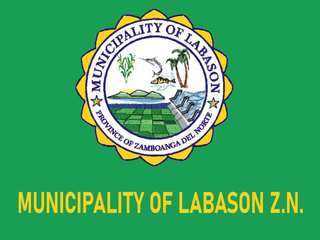
Labason, officially the Municipality of Labason, is a 3rd class municipality in the province of Zamboanga del Norte, Philippines. According to the 2020 census, it has a population of 43,934 people.

Piñan, officially the Municipality of Piñan, is a fourth-class municipality in the province of Zamboanga del Norte, Philippines. According to the 2020 census, it has a population of 20,221 people.
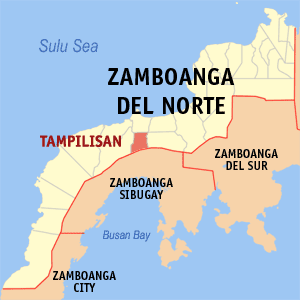
Tampilisan, officially the Municipality of Tampilisan, is a 4th class municipality in the province of Zamboanga del Norte, Philippines. According to the 2020 census, it has a population of 24,680 people.

Aurora, officially the Municipality of Aurora, is a 2nd class municipality in the province of Zamboanga del Sur, Philippines. According to the 2020 census, it has a population of 52,995 people.

Dumingag, officially the Municipality of Dumingag, is a 2nd class municipality in the province of Zamboanga del Sur, Philippines. According to the 2020 census, it has a population of 48,881 people.
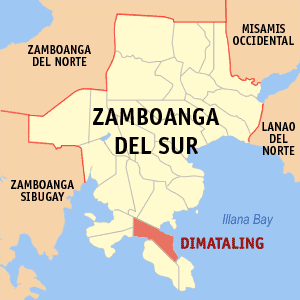
Dimataling, officially the Municipality of Dimataling, is a 4th class municipality in the province of Zamboanga del Sur, Philippines. According to the 2020 census, it has a population of 31,340 people.

Guipos, officially the Municipality of Guipos, is a 4th class municipality in the province of Zamboanga del Sur, Philippines. According to the 2020 census, it has a population of 21,738 people.

Mahayag, officially the Municipality of Mahayag, is a 3rd class municipality in the province of Zamboanga del Sur, Philippines. According to the 2020 census, it has a population of 48,258 people.

Molave, officially known as the Municipality of Molave, is a 1st class municipality in the province of Zamboanga del Sur, Philippines. In the 2020 census, it had 53,140 people. It is in the eastern part of the province of Zamboanga del Sur, and has an area of 21,685 hectares. The name "Molave" refers to the tree that was common in the area. Its economy is focused on agricultural production, and 1,378.5 hectares of fertile land is irrigated and planted with rice. Corn, coconut, cassava, banana, camote and various vegetables are also grown. These are marketed to neighboring towns and cities, and reach Cebu. Due to its strategic location, Molave is becoming the commercial hub of the Salug Valley. It is the most populous municipality in Zamboanga del Sur, and the third most populous in Region IX.

San Miguel, officially the Municipality of San Miguel, is a 4th class municipality in the province of Zamboanga del Sur, Philippines. According to the 2020 census, it has a population of 19,838 people.
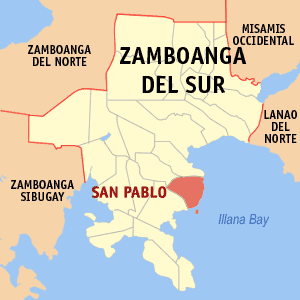
San Pablo, officially the Municipality of San Pablo, is a 4th class municipality in the province of Zamboanga del Sur, Philippines. According to the 2020 census, it has a population of 26,648 people.
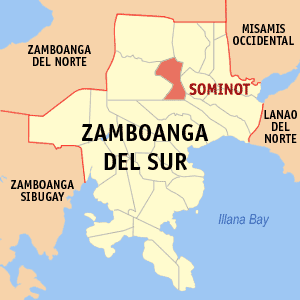
Sominot, officially the Municipality of Sominot, is a 5th class municipality in the province of Zamboanga del Sur, Philippines. According to the 2020 census, it has a population of 19,061 people.

Tabina, officially the Municipality of Tabina, is a 4th class municipality in the province of Zamboanga del Sur, Philippines. According to the 2020 census, it has a population of 25,734 people.
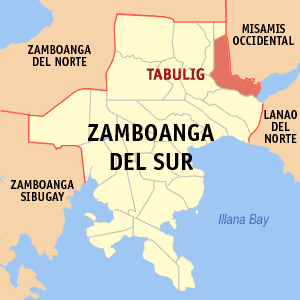
Tambulig, officially the Municipality of Tambulig, is a 4th class municipality in the province of Zamboanga del Sur, Philippines. According to the 2020 census, it has a population of 37,480 people.























